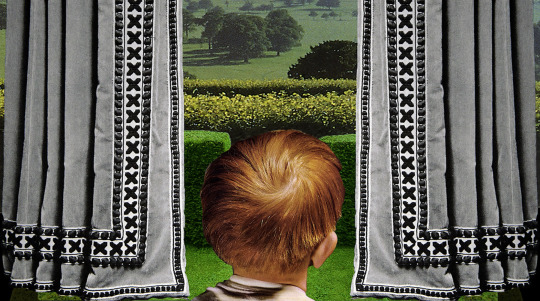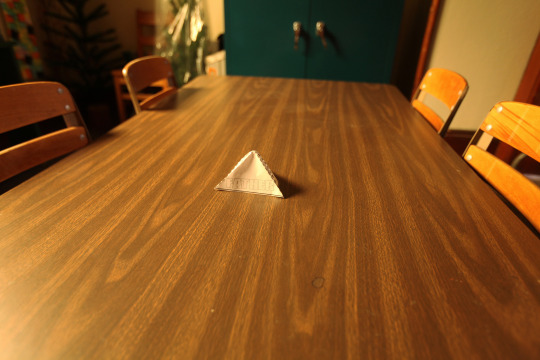Conversations | Leigh Davis’s Inquiry into the ELE
“Everyone I spoke to told me that their end-of-life experience (ELE) is one of the most meaningful experiences of their life.” – Leigh Davis
Multimedia artist Leigh Davis’s newest work, Inquiry into the ELE, takes its viewers through a string of accounts of intriguing and thought-provoking end-of-life experiences (ELEs). The filmic essay, which is accompanied by an assemblage of ethereal symbols and sounds, creates a meditative experience provoking personal investigation on the similar, phenomenal experiences individuals encounter near death as well as on the intricate processes of grief.
Inquiry Into the ELE is Act 2 of the culminating project which began three years ago after Davis’s own questions of her own ELE. Read more to learn more about the project, and take a sneak peak of the filmic essay below, now on view at BRIC House in Brooklyn, New York.
View Inquiry Into the ELE now through January 7, 2018
Project Room at BRIC House
647 Fulton Street, Brooklyn, NY 11217
Tuesday – Saturday: 10:00 AM – 6:00 PM; Sunday: 1200 PM – 6:00 PM
NYFA: How do you define end-of-life experiences (ELEs)?
Leigh Davis: End-of-life experiences, commonly shortened to ELEs, are unusual experiences which typically occur before, during, or after the time of a death by a person who is dying or who has lost a loved one. These experiences have been reported throughout all cultures, times, and places, and can be interpreted as premonitions, deathbed visions, golden light, changes in the temperature or atmosphere, terminal lucidity, or eerie coincidences. They often function as tools to help us understand both the emotional intricacy of grief and the ways in which we construct our beliefs about human consciousness and a possible afterlife.
NYFA: What led to your interest in investigating end-of-life experiences as subject matter? Have you ever experienced an ELE? If so, and if you are comfortable sharing, how would you describe the experience?
LD: My work often grows from my experiences with particular sites, communities, or individuals, but this particular body of work actually began after I had my own unusual experience following my father’s death in June 2013. In the hours before and then immediately following his passing, the room filled with a curiously luminous and peaceful golden light, with an otherworldly quality that seemed unrelated to the setting of the sun. I have since been revisited by that golden light, in a way that made me sense my father’s presence on an instinctual and intuitive level. My research into the context of my own experience led me to the existing literature and information on ELEs.

NYFA: You collect various accounts of ELEs from funeral directors, hospice nurses, religious leaders, etc. for Inquiry into the ELE. How are these accounts articulated in the film essay and what other materials encompass the project? Would you consider your work to be ‘journalistic?’ And if not, what are its interpretative elements?
LD: The ELEs I have gathered thus far were either told to me directly by the experiencers or transcribed from email and phone interviews and then read by voiceover actors. In the film, the accounts act as pauses for reflection, and are positioned in between interview segments I’ve gathered about the phenomena with experts in the social science, medical, and therapeutic fields. To allow the somewhat confessional ELE segments to stand on their own, at times they almost take the form of pure audio pieces, as black screens with sparse animation or fragmented imagery, echoing my interpretation of the narrator’s dream or memory. I’ve chosen to conceal the narrator’s images; therefore, the audio elements are important in order to bring viewers deeper into the ELEs and combine the voices of the experiencers and the experts, as well as provide ambient sound effects.
Creating a back-and-forth dynamic for viewers between intimate personal accounts and the more impersonal study of these experiences is my intention. As both an experiencer and archivist of these events, I want to create something that explores an interpretation of the meaning and emotional impact of ELEs rather than the more scientific questions of how, why, and if they truly occur. As an artist, educator, and anthropologically interested individual, my investigation is a form of collaborative study between myself and the other experiencers I have encountered.
NYFA: In your research, have you found any patterns between the degree in relationship to the person who is dying and the type of ELE they’ve experienced (e.g. the closer you are to the dying person, emotionally or physically, the more intense the experience may be or the more likely they are to experience a particular kind of ELE)? Do you think that spirituality or religious preferences affect the likelihood of experiencing an ELE?
LD: There are recurring elements or patterns in ELEs that appear over and over again—unexplained phone calls, lifelike dreams, unusual behavior from animals—that lend authenticity and solidity to these accounts. Through my research, I have discovered a shared glossary of experiences suggesting that ELEs are both somehow external to the self (or not merely “imagined”) and accessible to people of all backgrounds and beliefs. Many of the accounts reveal the close relationships that allow these experiences to happen—friends, lovers, relatives, and those who care for the dying—and reveal how those relationships inform the process in a remarkable way. And, as for spirituality or religious preferences affecting the likelihood, individuals who have had an ELE must be willing to consider how such an experience contributes or conflicts with their life narrative, in order to engage with these memories and integrate them into an existing worldview. A denial or rejection of the experience has been noted in cases where a person finds it too difficult to accept the authenticity of the experience due to the lens of their beliefs.

NYFA: How have your subjects understood their experiences with ELEs? Do they consider them to be coincidences, hallucinations, or evidence of an after-life? Do you think we could ever come to understand what ELEs are and why they occur as phenomenon?
ELEs are personal remnants of lives lived and lost, illuminating experiences that are profoundly meaningful to those who have felt them but are rarely discussed publicly due to fear of social rejection. The idea of interconnectedness before, during, or after death is the common thread throughout these stories, no matter the type or timing of the experience. Everyone I spoke to told me that their ELE is one of the most meaningful experiences of their life. Perhaps we have to accept that ELEs can sometimes be a shared experience rather than just a personal one. Because these experiences are primarily subjective, and do not fit into today’s scientific theory, our culture typically does not have a way to understand and discuss them as the significant and mesmerizing occurrences that they are. The project is my attempt to examine all this unexplored territory since there is no objective measure by which the authenticity or scientific importance of an ELE can be determined.
NYFA: Inquiry into the ELE is currently a ‘work-in-progress.’ What is left for the project’s completion? When will it be complete?
LD: I have a number of remaining individual accounts I will incorporate into the film and the audio material has been the starting point for my experimentation with the projects’ imagery. I am excited to create more fluid connections between experiences and have a culmination of all the crossovers throughout my findings. I will continue to pose questions and share the accounts with a few researchers in the field over the next few months. My plan is to complete the project for public presentation in the winter of 2019, and I am brainstorming sites for the premiere that would serve the work.

NYFA: At what stage of Inquiry into the ELE did you approach NYFA Fiscal Sponsorship?
LD: I approached NYFA a year ago when I realized I had to create a film of the project (it began as a lecture-performance work). All of the works I have produced exploring death and grieving have been specifically created to encourage community participation and discussion, with opportunities for individuals of various ages, cultural, and spiritual backgrounds to come together and share a physical and emotional space designed to process emotions and reflect on these topics in a supportive environment. Having NYFA act as a conduit for the project (honestly) helps me to stay on task to get the work made and out there, as well as encouraging me to apply for grants or reach out to organizations or spaces I may otherwise not approach.
Leigh Davis creates multimedia work that is both deeply personal and anthropologically rich, navigating the complex line between voyeurism and empathy. In recent years, projects have taken the form of shrines, altars, and collections of various objects and images that work together to form a cohesive and immersive installation. To house these works, Davis has been drawn to sites that present their own spirituality or sense of community, using this intrinsic human quality to complement the stories represented in the installations. Her overall work is designed to foster connection between viewers and community members, encouraging conversation about the aspects of humanity that keep us apart and bring us together.
Currently, Davis is working on a body of work about the modern rituals surrounding death and the remnants of the life left behind. Vigil, her recent site-based audio installation, stems from Davis’s vocal work with a community of women continuing the tradition of bedside singing to the dying. This project was created for the historic chapel at Green-Wood Cemetery (Oct. 2017). Davis teaches courses at Parsons the New School for Design and lives with her family in Brooklyn, New York.
-Interview conducted by Priscilla Son, Program Assistant, Fiscal Sponsorship & Finance
Are you an artist or a new organization interested in expanding your fundraising capacity through NYFA Fiscal Sponsorship? We accept applications on a quarterly basis and our next no-fee deadline is December 31. Click here to learn more about the program, current fiscally-sponsored projects, and to apply.
Image Credits: Leigh Davis, Inquiry Into the ELE, 2017, Photograph (2013); Leigh Davis, Inquiry Into the ELE, 2017, Stills




